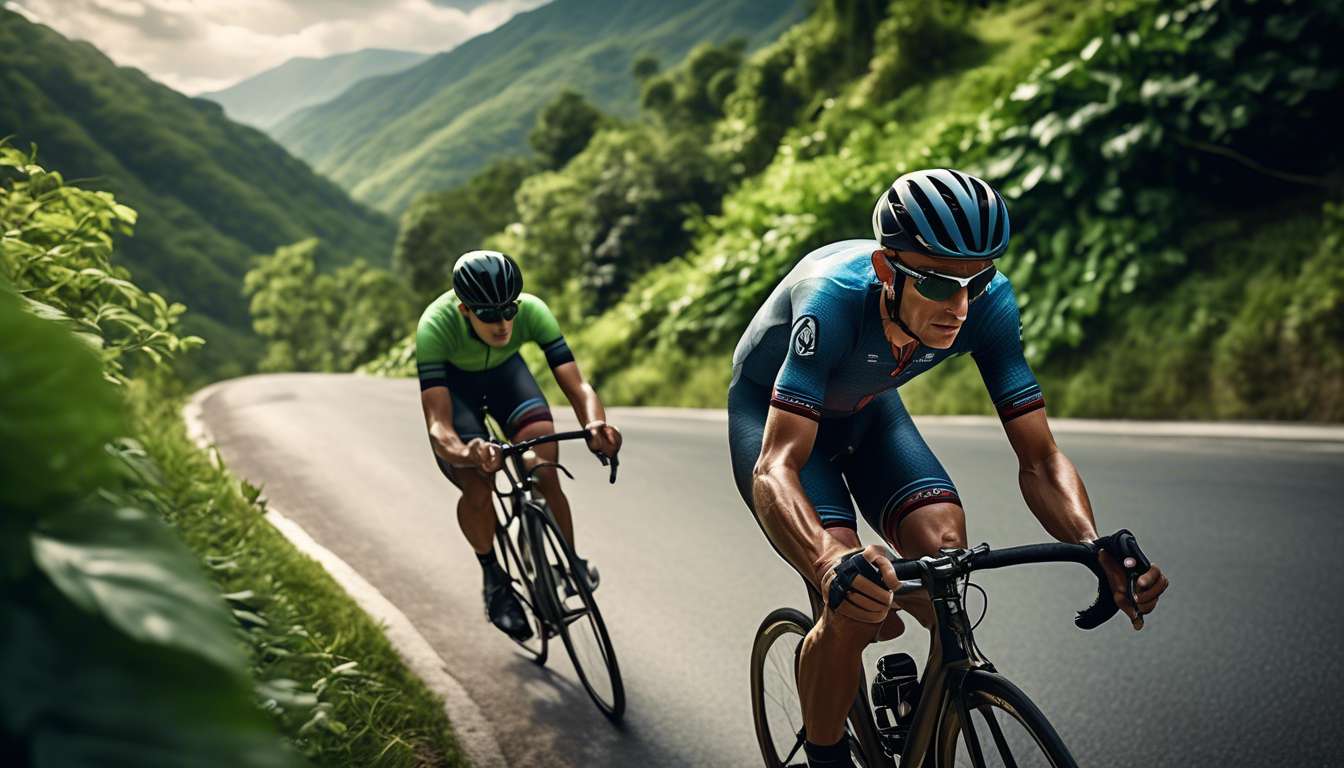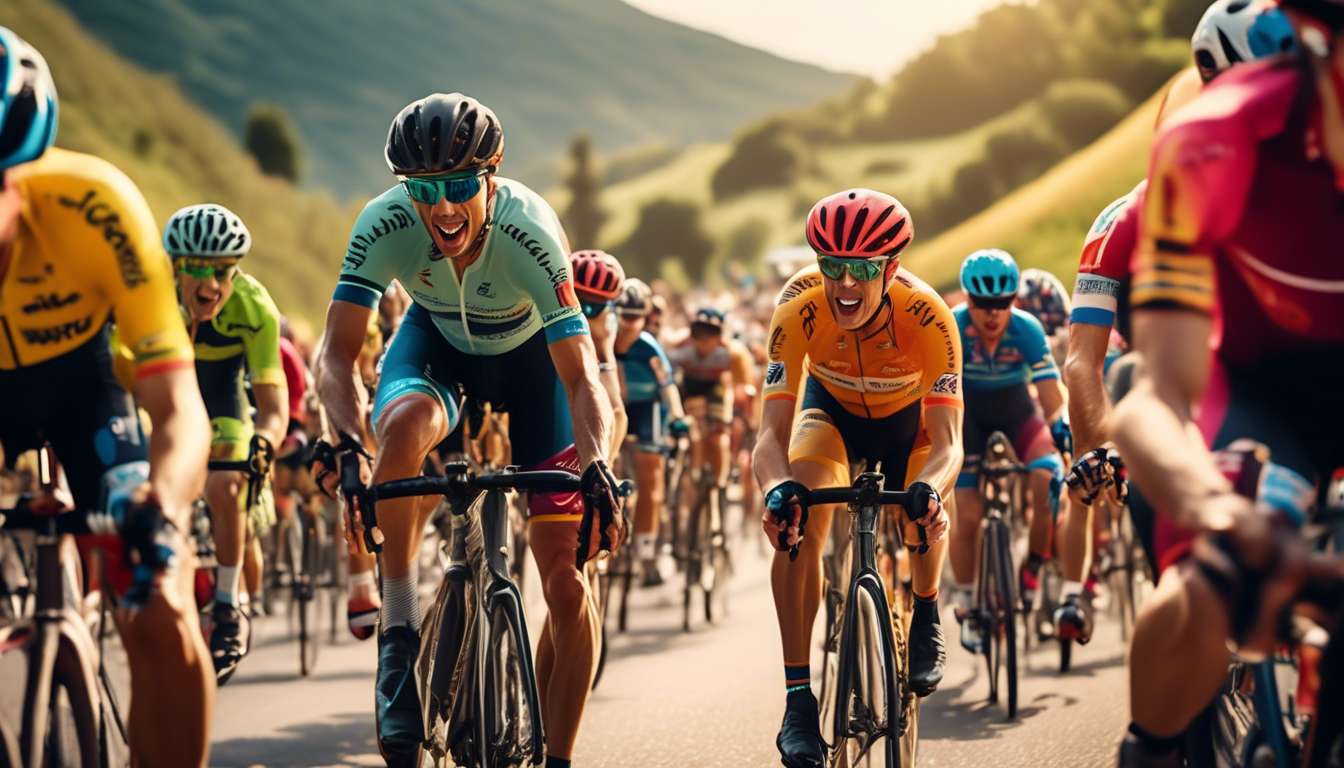As enthusiasts of the cycling world, we find ourselves constantly captivated by the thrilling unpredictability of each race. With every pedal stroke, the potential for unexpected turns keeps us on the edge of our seats.
In our collective quest to understand and perhaps outsmart the odds, we delve into the intricate web of factors that influence the outcomes of cycling events. From the grueling terrain and unpredictable weather conditions to the strategic nuances employed by each team, we aim to uncover the elements that can sway the results in ways we might not initially anticipate.
By exploring the psychological and physical dynamics at play, we hope to equip ourselves with a deeper understanding and sharper insights for our cycling betting endeavors.
Together, let’s navigate the complexities and unravel the secrets that could potentially guide us to more informed decisions and, ultimately, greater success in our betting pursuits.
Terrain and Weather Impact
The terrain and weather conditions significantly influence cycling outcomes, so we should always consider them when placing bets. As a community that thrives on shared insights, understanding how these elements shape a race is crucial for us.
Terrain dictates the strategy and performance of cyclists:
- Flat stages benefit sprinters, leveraging their explosive power.
- Hilly or mountainous stages favor climbers, where endurance and strength are paramount.
Weather is also a game-changer:
- Rain can make roads slippery, demanding more cautious strategies.
- Strong winds might benefit cyclists who can draft effectively.
- Extreme temperatures, whether hot or cold, can test even the most seasoned athletes.
By taking these factors into account, we enhance our betting strategies and deepen our connection with the sport.
Let’s continue to share these insights, as they bring us closer together and improve our mutual understanding of cycling’s dynamic nature.
Team Strategy Dynamics
In cycling, team strategy dynamics often determine race outcomes by leveraging individual strengths for collective success.
As we analyze a race, we see how crucial terrain is in shaping our strategy. Each team assesses the course, identifying sections where their riders can excel, whether it’s a climb, descent, or flat stretch. By doing so, we align our efforts, allowing each member to perform at their peak.
Our strategy often involves assigning roles:
- Domestiques to set the pace
- Climbers to conquer ascents
- Sprinters for the final push
Coordination is key. We communicate seamlessly, adapting to the race’s unfolding dynamics. This cohesion not only enhances our performance but also fosters a sense of unity and belonging within the team.
In essence, a well-executed strategy on varied terrain can be the difference between victory and defeat. As fans and participants, understanding these dynamics helps us appreciate the intricate dance of cycling teams as we cheer them on.
Rider Fitness Levels
Our ability to succeed in races heavily depends on maintaining optimal rider fitness levels throughout the season. As a community of cycling enthusiasts, we know how crucial it is to keep our bodies in peak condition to tackle varying terrain and execute our strategies effectively.
Rider fitness isn’t just about endurance; it encompasses:
- Strength
- Recovery
- Adaptability
Each race presents unique challenges, and our performance hinges on our readiness to face:
- Steep climbs
- Swift descents
- Grueling flats
Staying fit means more than just physical preparation. It involves:
- Mental resilience
- Strategic planning
Training routines must be tailored not only to the expected terrain but also to the dynamic demands of each race.
By focusing on our fitness levels, we enhance our ability to respond to race-day conditions, allowing us to perform optimally and achieve our goals together as a united cycling family.
Equipment and Technology Advancements
In recent years, our cycling experience has been transformed by cutting-edge equipment and technological advancements. We’ve witnessed a shift where the right gear doesn’t just complement performance; it can redefine it. From aerodynamic helmets to lightweight frames, these innovations enhance how we tackle varied terrain and execute our strategy. As a community that thrives on the thrill of the race, we understand how crucial these advancements are in optimizing performance.
By embracing technology, we gain an edge. For instance:
-
Electronic shifting allows us to transition seamlessly through gears, adapting instantly to changing inclines. In competitive settings, where milliseconds count, such precision can be the difference between winning and losing.
-
The integration of power meters and data analytics empowers us to fine-tune our strategy, focusing on strengths and identifying weaknesses.
Together, let’s continue to explore how these advancements shape our collective journey, ensuring every ride is not only a test of endurance but a celebration of innovation.
Race Course Layout
Understanding the intricacies of a race course layout gives us a strategic advantage in planning our approach and maximizing our performance. When we examine the terrain, we can anticipate the challenges and opportunities that lie ahead. Whether it’s steep climbs, sharp descents, or flat stretches, each element influences our strategy and how we prepare mentally and physically.
As a community of cycling enthusiasts, we’re united by our shared passion for the ride and the thrill of competition. When we recognize the nuances of different terrains, we can better support each other in refining our strategies and improving our collective performance. We know that a well-planned approach to the course layout can make the difference between winning and losing.
By analyzing past races and course maps, we’re able to:
- Identify patterns.
- Predict how certain terrains might affect outcomes.
This shared knowledge not only strengthens our bond but also enhances our ability to perform at our best.
Tactical Race Plans
Crafting effective tactical race plans requires us to consider various factors, including competitor strengths, weather conditions, and individual performance metrics. As a community of cycling enthusiasts, we understand how important it is to align strategy with the unique terrain of each course.
Whether it’s a flat stage demanding explosive sprints or a mountainous climb requiring endurance, our ability to adapt our strategy can make all the difference.
Evaluating Terrain Impacts:
- Different terrains significantly impact cyclist performance.
- A rider who excels on hilly terrain might struggle on flat courses.
- By analyzing performance data, we can anticipate how well each cyclist might perform under specific conditions.
This analysis allows us to make informed predictions and tailor strategies accordingly.
Energy Management:
- Knowing when to conserve energy and when to push for a lead is crucial.
- Carefully planning our strategy to exploit competitors’ weaknesses enhances our chances of success.
Together, by sharing insights and experiences, we create a supportive community where everyone feels included and informed.
Mental Resilience Factors
Understanding mental resilience’s role in cycling helps us tackle challenges with confidence and determination. Cyclists face a variety of terrains, each demanding a unique mental strategy. Whether climbing steep mountains or racing through flat stretches, maintaining focus is crucial. Mental toughness allows cyclists to adapt their strategies mid-race, ensuring optimal performance.
In our community, we value the shared experience of overcoming adversity. Mental resilience not only influences individual performance but also fosters camaraderie among cyclists. By supporting one another, we strengthen our collective resolve and improve our chances of success on any terrain.
Our strategies often hinge on mental endurance. When faced with grueling conditions, it’s our psychological fortitude that propels us forward. A cyclist’s mental resilience can be the difference between victory and defeat.
Let’s continue to nurture this vital component by:
- Elevating our performance.
- Enhancing our sense of belonging in the cycling world.
Historical Performance Patterns
Analyzing Past Races
Analyzing past races gives us valuable insights into performance trends and helps refine our betting strategies. By examining historical data, we identify how cyclists adapt to various terrains, which directly impacts their performance.
Terrain-Specific Performance
Whether it’s a flat sprint or a challenging mountain climb, understanding a cyclist’s previous results on similar paths can guide our predictions. We notice that certain riders excel in specific conditions, and by recognizing these patterns, we can anticipate their strategy and performance.
Historical Data: More Than Just Numbers
When we look at historical performance, we’re not just seeing numbers; we’re uncovering stories of endurance and tactics.
Community and Shared Insights
Our shared passion for cycling creates a community where we exchange insights and learn from each other. By understanding how terrain affects strategy, we place more informed bets, increasing our sense of belonging within this knowledgeable group.
Enhancing Betting Experience
As we delve deeper into historical trends, we enhance our ability to predict outcomes, making our betting experience more rewarding and connected.
How do betting odds fluctuate in cycling events?
When we look at how betting odds fluctuate in cycling events, it’s important to consider various factors such as:
- Rider form
- Race dynamics
- Weather conditions
These elements play a significant role in determining the odds offered by bookmakers.
As the race progresses and new information emerges, odds can shift quickly, reflecting the evolving circumstances.
Keeping a close eye on these variables can help us make more informed betting decisions in the exciting world of cycling events.
What are the most common types of bets placed in cycling races?
When we talk about the most common types of bets placed in cycling races, we usually think of straightforward wagers like predicting the race winner or the stage winner.
Some fans also enjoy betting on head-to-head matchups between specific cyclists.
These bets can add extra excitement to following the race and make it more engaging for us as viewers.
It’s always interesting to see how our predictions turn out!
How do bookmakers set the initial odds for cycling competitions?
When bookmakers set initial odds for cycling competitions, they consider various factors to calculate the likelihood of each rider winning. Key elements include:
- Past Performance: Historical data on how riders have performed in similar races or conditions.
- Current Form: The recent performance and fitness level of the riders.
- Weather Conditions: How weather might impact the race and favor certain riders.
- Team Dynamics: The strategies and support each rider receives from their team.
Bookmakers use a combination of data analysis and expert knowledge to determine these odds. These initial odds serve as a baseline, which can shift based on:
- Betting Activity: Changes in betting patterns can influence the odds.
- New Information: Any updates or news related to the race or riders.
By considering these factors, bookmakers aim to set odds that reflect the most probable outcomes of the race.
Conclusion
In conclusion, when betting on cycling, consider the following key factors:
-
Terrain: Different terrains suit different riders. Analyze which riders perform best on mountains, flat stages, or hilly sections.
-
Weather: Conditions like rain, wind, or heat can significantly impact race outcomes.
-
Team Strategies: Team dynamics and tactics play a crucial role in supporting individual riders and influencing race results.
-
Rider Fitness: Assess the current form and fitness levels of riders, as these are critical to their performance.
-
Equipment: Technology and equipment, including bikes and gear, can offer advantages in speed and efficiency.
-
Course Layout: Familiarize yourself with the course layout to understand potential challenges and opportunities for riders.
-
Race Tactics: Study how different riders or teams might approach the race strategically.
-
Mental Resilience: Consider the mental toughness of riders, especially in long or grueling stages.
-
Historical Trends: Review past performances and trends in similar races or conditions.
These factors heavily influence outcomes and can give you an edge in predicting race results.
Stay informed, analyze the data, and trust your instincts to make informed betting decisions.
Happy cycling betting!




